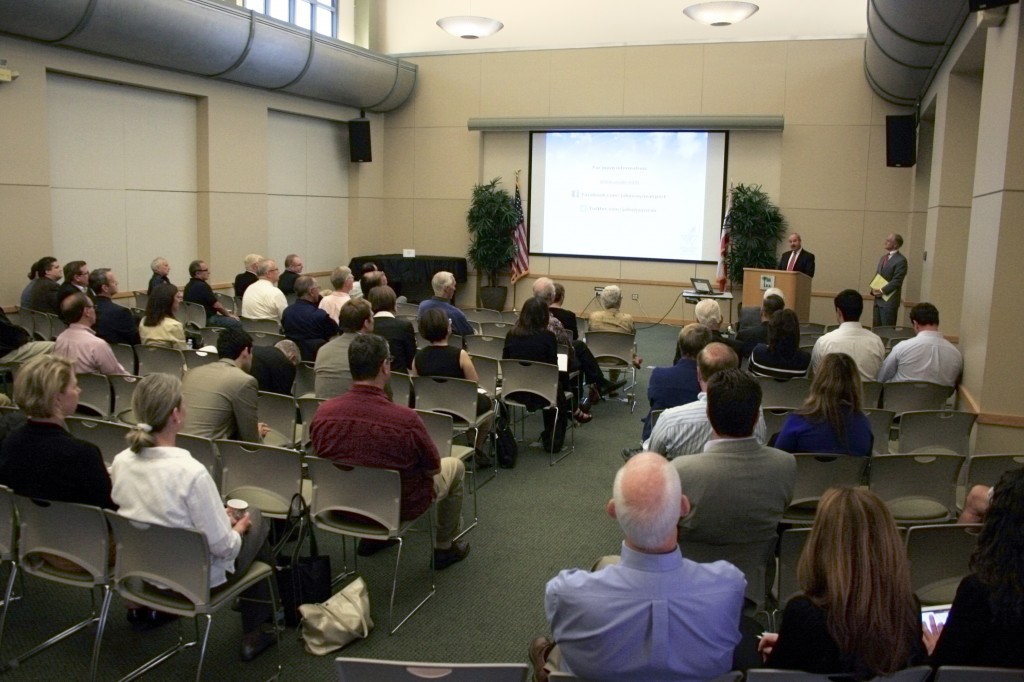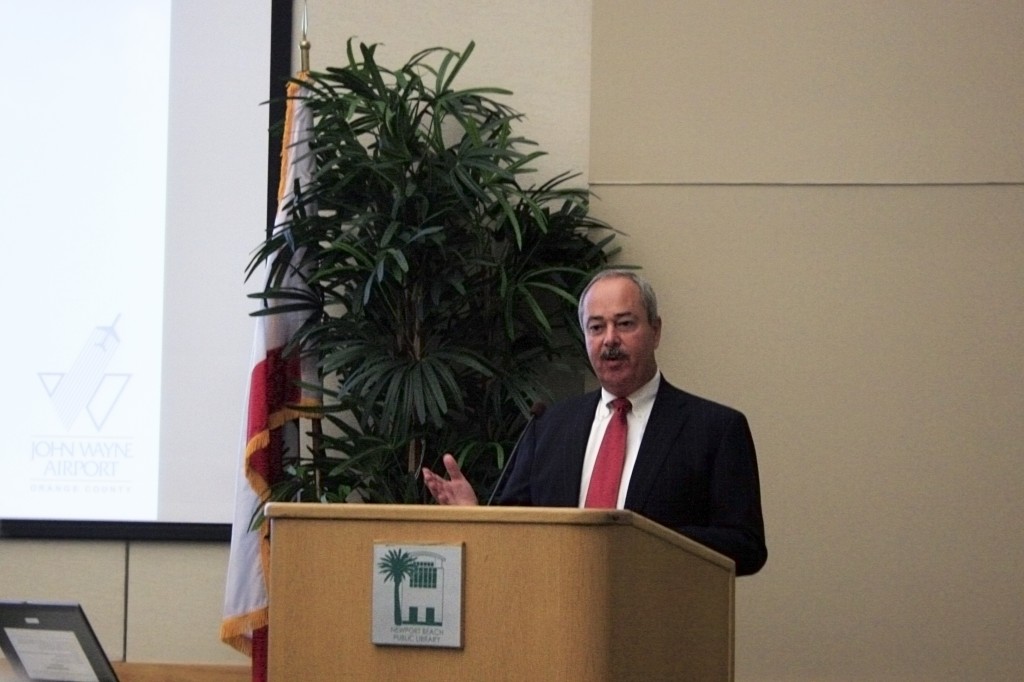
The proposed agreement between the city and John Wayne Airport might call for more flights and an increased maximum number of passengers over the next 15 years, but some of those might be headed directly to Hawaii, a airport official reported Thursday.
John Wayne Airport was the topic of discussion at this month’s Newport Beach Chamber of Commerce’s government affairs breakfast meeting on Thursday.
The event featured guest speaker Alan Murphy, airport director of JWA. Murphy covered a variety of airport-related topics, including the Airport Settlement Agreement, the newly-formed Air Service Task Force, partnership with Newport Beach tourism, information/statistics, goals and expectations, and possibly bringing back flights to Hawaii.
Over the last year and a half, John Wayne officials have been sitting down with the city and community groups, Murphy said, working on the agreement and looking at how it will change after the current one ends in 2015.
“The discussions have been very positive,” he noted.

The city and community groups have proposed a project and JWA has put together three possible alternatives, he explained.
They are required to study alternatives as part of the California Environmental Quality Act process, Murphy said, adding “but we’re really focusing on what the city proposed.”
“The first is based on the FAA’s (Federal Aviation Administration’s) forecast for the region, the second one is based on input from the airlines, and the last one, alternative C, is based on physical capacity of the airfield,” he stated. There is also a “no project” alternative to be reviewed as well.
The proposed project from the city is a 15-year extension, starting in 2015, with changes phased in every five years. In the first five years, there would be no changes in the annual passenger limit or daily passenger flight service. By 2025 though, there would be an increase in the annual passengers cap from 10.8 to 11.8 million and an additional 10 passenger flights every day. There would be another increase in 2030, of either 12.2 or 12.5 million passenger max, depending on the demand, and no change in the number of flights.
The three alternatives include increases of both passengers and flights over the 15-year period.
Options A and B have no change in the number of million annual passengers (MAP) in the first five years, but then it increases up to 11.4 and 13 million, respectfully. By 2030, alternative A is at 12.6 MAP and choice B is at 15. Alternative C goes up to 16.9 million passengers per year max during the first five years and stays there for the duration of the agreement.
The number of daily passenger flights also increase in the three alternatives—plus 22, 15 and 143, for A, B, and C, respectfully. Alternative C again stays the same with no other increase for the rest of the agreement. Options A and B go up 13 and 10 by the year 2025, and another 15 and 5 during the last five years.
“While the airport, we think, is a very positive influence in the community, it has negative impacts in the community too,” Murphy admitted. “We always need to be mindful of that and try to strike the appropriate balance in looking at the airport’s operations.”
He also answered questions about getting flights to Hawaii back.
“We know the market is there. We know there is a lot of interest from people in Orange County flying to Hawaii and vice versa,” Murphy said.
He had nothing solid to report, he said, just that there are several challenges and “it’s something we are actively working on.”
Murphy also reported that the OC airport has been working on getting more involved with marketing, advertising and promoting JWA, which includes some social media outreach through facebook, twitter, and the website.
As part of the promotion and marketing process, an Air Service Task Force was recently formed. The group focuses on tourism, business, and the airport, and includes Gary Sherwin of Newport Beach and Co.
The team is very research-based and results-oriented, Murphy said.
“We’re very excited about how it’s going to take off,” said Murphy, who hopes the group will have some great results within a year.
The group aims to figure out how the airport can sell to more carriers and how to promote JWA to serve additional markets, he explained.
“Airports nationwide have been impacted by the recession,” Murphy said.
The biggest year for JWA was 2007, he explained, with about 10 million passengers. Last year came in at about 8.6 million, he added. This is the trend nationwide, he continued.
“Actually, John Wayne has done a little better during the recession than most other airports of our size, the medium size,” like Burbank, Ontario, or Long Beach, he explained. “And we’re starting to grow out of it.”
The Orange County airport has seen a small increase, about 6.7 percent, in passenger levels so far this year, he said. It is about the 38th busiest airport in the U.S.
Also during the meeting, chamber president Steve Rosansky announced the “re-branding” of the group’s monthly government affairs breakfast meetings, now to be called WAKE UP! Newport. The new meeting style will focus not only on government topics, but community issues as well, which will allow the chamber to attract a broader spectrum of speakers and attendees.
For more information, visit newportbeach.com.




